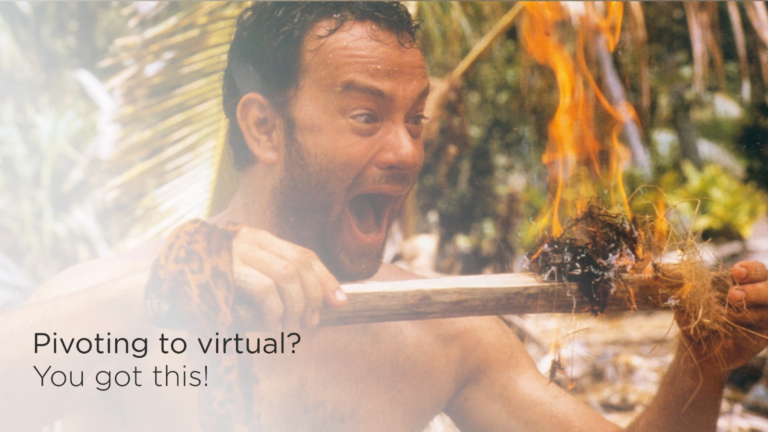Connecting People at Virtual Events: 6 Actionable Ideas & Best Practices to Increase Audience Engagement
Something inexplicable happens when two people form a genuine connection over a shared interest. As virtual events grow, those moments are becoming harder to find. The right virtual events platform brings them back by truly connecting people at virtual events.

At a beautiful Santa-Barbara wedding some years ago, a young MTV producer was sitting in a pew, nervously awaiting her turn to give a reading. A calm man sits down next to her, and they strike up a conversation. And as they say, the rest is history… but there’s actually more to this story.
As it turns out, he was a Silicon Valley entrepreneur, and she had ambitions beyond Hollywood. Together they started Eventbrite: the ticketing software platform that processes 3 million gatherings each year, spanning $8 billion in gross ticket sales since its founding in 2006. It’s hard to imagine what the event industry would be if Julia and Kevin Hartz never met.

Events have an unmatched power of bringing people together. In fact, our very own head of product and head of design met while on a shuttle bus at a music festival. They became fast friends. Some might call it a bro-mance. And they can’t remember exactly how they got talking, but as they describe it, “The universe was calling us.” An instant bond was formed, and without the two of them starting a friendship, who knows where our company would be today?

Something inexplicable happens when two people form a genuine connection over a shared interest. And with the shift to virtual events, these connections are often left to the wayside. And that’s a shame, but it’s not something that we have to accept. Our CEO, Michael Buckley, recently spoke about this topic at The Future of Events Leadership Summit by Event Manager Blog. He gave incredible insight into connecting people at virtual events.
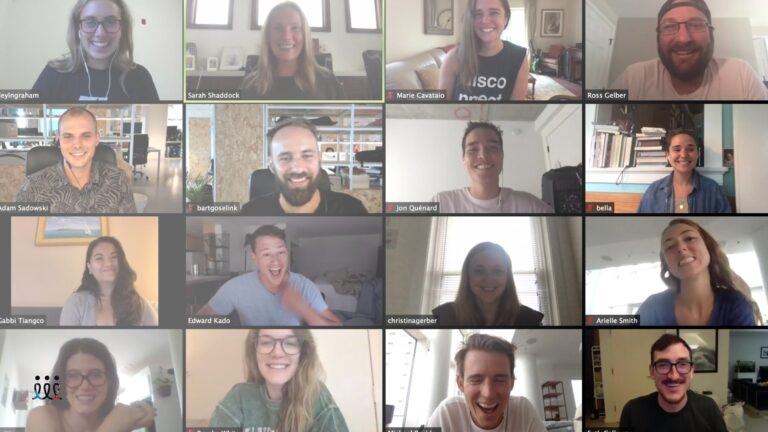
Let’s get into the virtual event ideas and best practices:
1. Have attendees make profiles upon registering for the event:
Every individual is incredibly unique. At the end of the day, we all just want to be heard and understood. It’s human nature. That’s why we believe icebreakers are extremely powerful. For example, “What’s your biggest pet peeve?” or “What’s a recent shower thought you’ve had?”
Take a look at Joanna here.

By scrolling through her profile, we have a peak into who she is, her humor, and what makes her unique. Embed these icebreakers into the registration process of the virtual event for the best results.
Organizers can include prompts in registration forms, attendee surveys, or while onboarding for the event. Add this information to people’s profiles, so other attendees can get a glimpse. And to make best use of this information, put your attendees into groups based on these responses. This will increase engagement among attendees.

2. Ask prompted questions in the Live Feed:
There’s no better way to start a dialogue than to ask a thought-provoking or humorous question. Encourage attendees to reply in written or video format. For example, “What is one piece of advice you can give that has helped you while being home for quarantine?”

Using questions to spark conversations creates avenues for people to share who they are. We encourage honesty and vulnerability, but also make sure to ease them into it. For example, asking “Where are you from?” is a better starting off point than “When is the last time you cried?”

3. Let the audience connect over similar topics of interest:
Establish some topics of interest unique to the event, but also let the audience submit their own topics as well. Our CEO gave the example of how he likes pro-wrestling. Maybe that’s not something he’d announce to a group of 50 people in-person but, submitting it to a list of topics is inherently easier. Before you know it, he’s connected with a middle-aged man from Italy and a young woman in Singapore who also share this interest. Who knew!?
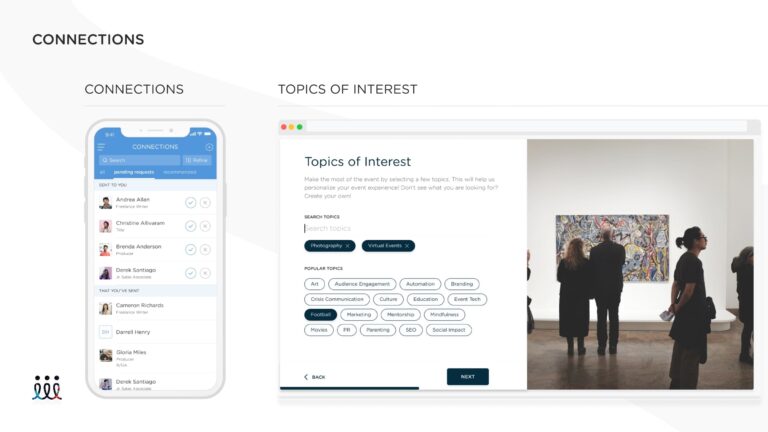
Once people have established their interests and why they are at the event, recommend similar people or activities that correspond with this information. If possible, allow your audience to create their own sessions or pop-ups around the set Schedule.
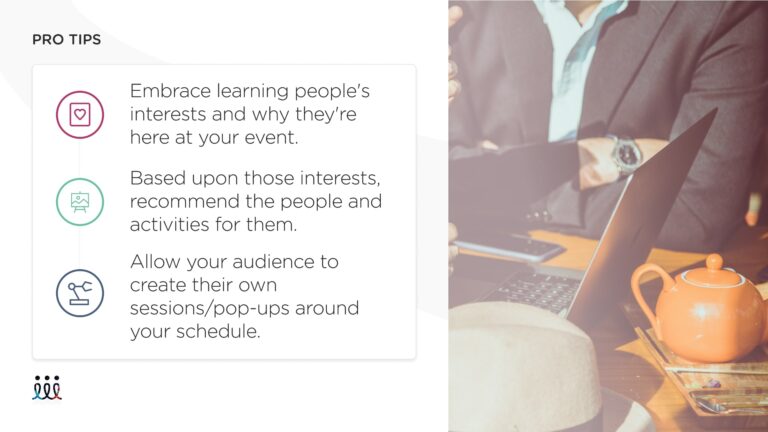
4. Utilize a platform that allows for personalization:
Of course, we want attendees to connect with other attendees, but that’s not the only important connection to focus on. For example, one must connect the audience to the brand. At in-person events, one might do this through the branding signage, the stage, booths, etc. Virtually, organizers are beholden to the platform they’ve chosen.
Find a virtual event platform that embraces brands. An organizer should be able to personalize the platform with logos, color schemes, etc. For example, if Spotify uses an event platform for their event, it should still come off to attendees as a Spotify event.
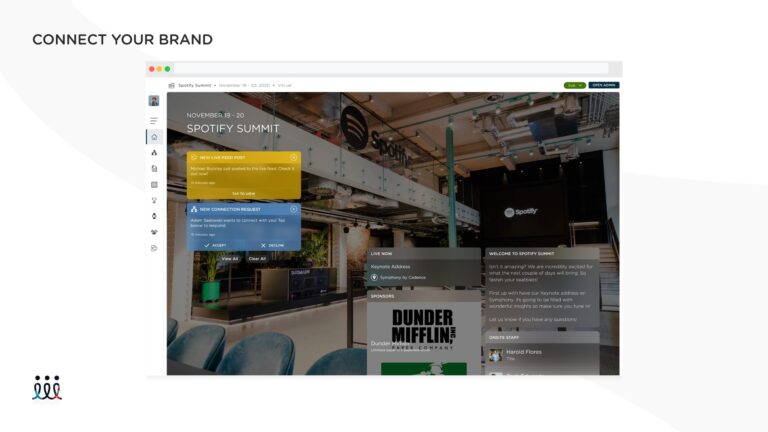
5. Don’t isolate your speakers & sponsors, they need love too:
Most speakers take ample time to prepare their presentations. After an in-person speech, someone from the audience might turn to the person next to them to give their thoughts. But more often than not, the speaker is left with little to no feedback.

With the right platform, a virtual setting is better for speaker and audience interaction. Attendees can ask questions before, during, or after the presentation without fear of physically raising their hand or interrupting the speaker. Speakers can also send out surveys to the audience to get more insight. Additionally, they can display all of their social handles and contact information.
The same goes for sponsors. Without booths or physical conversations, they may be left in the dust. By encouraging audience interaction, polling, and live questions, the sponsors can expect increased engagement.

Provide direct access to the brand, speakers, and sponsors. It is a good idea to utilize branding on the home page, while also giving some love to speakers and sponsors. But most importantly, give a voice to your attendees! Remember, they just want to be heard.
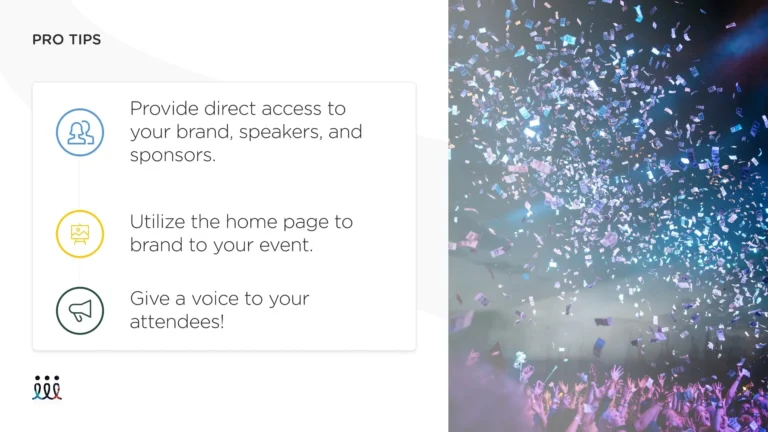
6. Encourage communication after the event:
Connecting people at virtual events is great, but the greater opportunities exist when the connections last past the event. One way to ensure this is by sending out a summary email to each attendee. The more personal, the better. Also, give them the contact information for all of the people they connected with along the way and provide them with access to all of the information they’ve learned over the course of the event.

Lastly, share the best moments with attendees after the event. A picture is worth a thousand words, so give attendees access to relive those memories through the Live Feed or the Gallery. Imagine when employees are having a bad day, they can look back at the company event to the lake last summer to remind themselves why they love working with this team.

It’s hard to predict when in-person events will make a return, so it’s important to implement these practices to get the most out of virtual events. After all, what’s a world without human connection?
